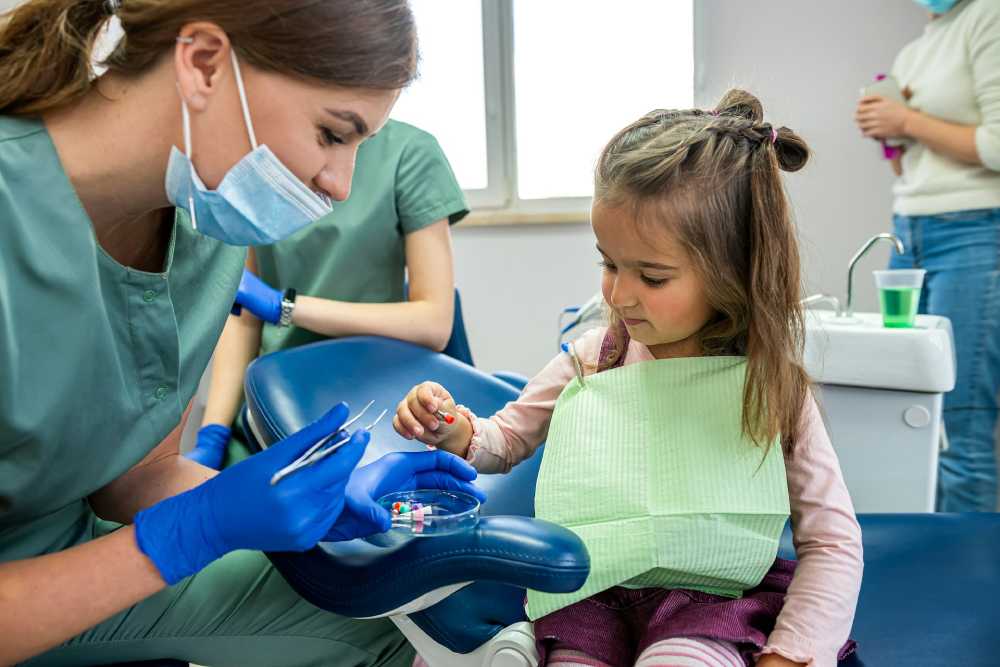Your child’s smile tells a story, and sometimes that story includes warning signs you shouldn’t ignore.
Most parents don’t realize that orthodontic problems can start showing up as early as age 2, and catching them early can save your child from more complex treatments later.
Whether you’re visiting a saskatoon pediatric dentistry practice or your local dental office, understanding these early indicators helps you make informed decisions about your child’s oral health.
Age-Specific Red Flags to Watch For
Different ages bring different concerns. Here’s what you should keep an eye on:
Ages 2-4: Watch for prolonged thumb sucking, difficulty chewing, or mouth breathing. These habits can shape how your child’s jaw develops.
Ages 5-7: Look for crowded baby teeth, gaps that seem too wide, or teeth that don’t meet properly when your child bites down.
Ages 8-12: Notice if permanent teeth come in crooked, if your child’s jaw shifts when they close their mouth, or if they complain about jaw pain.
| Age Group | Key Warning Signs | When to Act |
| 2-4 years | Thumb sucking beyond age 3, mouth breathing, difficulty speaking clearly | Schedule consultation if habits persist |
| 5-7 years | Crowded baby teeth, early or late tooth loss, jaw misalignment | First orthodontic screening recommended |
| 8-12 years | Crooked permanent teeth, jaw clicking, facial asymmetry | Immediate evaluation needed |
Physical Signs That Need Your Attention
Your child’s face and mouth give you clear signals when something’s not right.
Facial asymmetry is one of the most obvious signs – if one side of your child’s face looks different from the other, this could indicate jaw growth problems.
Watch how your child closes their mouth. If their lips don’t meet naturally or if they have to strain to close them, this suggests their teeth or jaw position needs correction.
You might also notice your child breathing through their mouth instead of their nose, which can affect facial development over time.
Teeth grinding at night is another red flag. While some grinding is normal, persistent grinding can indicate bite problems or stress on the jaw joints. If you hear your child grinding their teeth regularly, it’s worth discussing with a dental professional.
Behavioral Clues Your Child Might Show
Children often develop habits that compensate for orthodontic issues. If your child consistently chews on one side of their mouth, this might mean the other side doesn’t fit together properly. They might also avoid certain foods because they’re difficult to chew.
Speech problems can also signal orthodontic issues. If your child has trouble pronouncing certain sounds or if their speech seems unclear for their age, misaligned teeth might be the culprit.
Research shows that 23% of speech problems in children are related to dental issues.
Some children become self-conscious about their smile early on. If your child suddenly stops smiling with their teeth showing or covers their mouth when they laugh, they might be aware that something looks different.
When Professional Help Becomes Necessary?
The American Association of Orthodontists recommends that children have their first orthodontic screening by age 7.
This doesn’t mean every child needs treatment at this age, but it allows professionals to spot problems early.
You should schedule an appointment sooner if you notice any of these urgent signs: teeth that don’t meet when your child bites down, permanent teeth coming in behind baby teeth, or jaw pain that affects eating or sleeping.
Early intervention works. Studies show that children who receive orthodontic treatment between ages 6-10 often need less extensive treatment later.
The jaw is still growing during these years, making it easier to guide teeth into proper positions.
Simple Home Monitoring Techniques
You don’t need special equipment to monitor your child’s dental development.
During bath time or before bed, take a quick look at their teeth alignment. Are the top and bottom teeth meeting evenly? Do you see any teeth that seem out of place?
Take photos every few months. This creates a visual record that helps you notice gradual changes.
If you spot something concerning, these photos can also help your dentist understand how quickly problems are developing.
Pay attention to your child’s eating habits. If they suddenly start avoiding certain foods or complain about jaw tiredness after meals, these could be signs of bite problems.
Most importantly, trust your instincts. You know your child best, and if something seems off about their smile or the way they eat and speak, it’s worth getting a professional opinion.
Early detection of orthodontic problems can make treatment more effective and less invasive, giving your child the best chance for a healthy, confident smile.




